RARE! WWII December 1944 517th Parachute Infantry Regiment "Melvin Earl Biddle" Medal of Honor Hotton - Belgium Battlefield Artifact Print (Preserved Bullet Fragment)
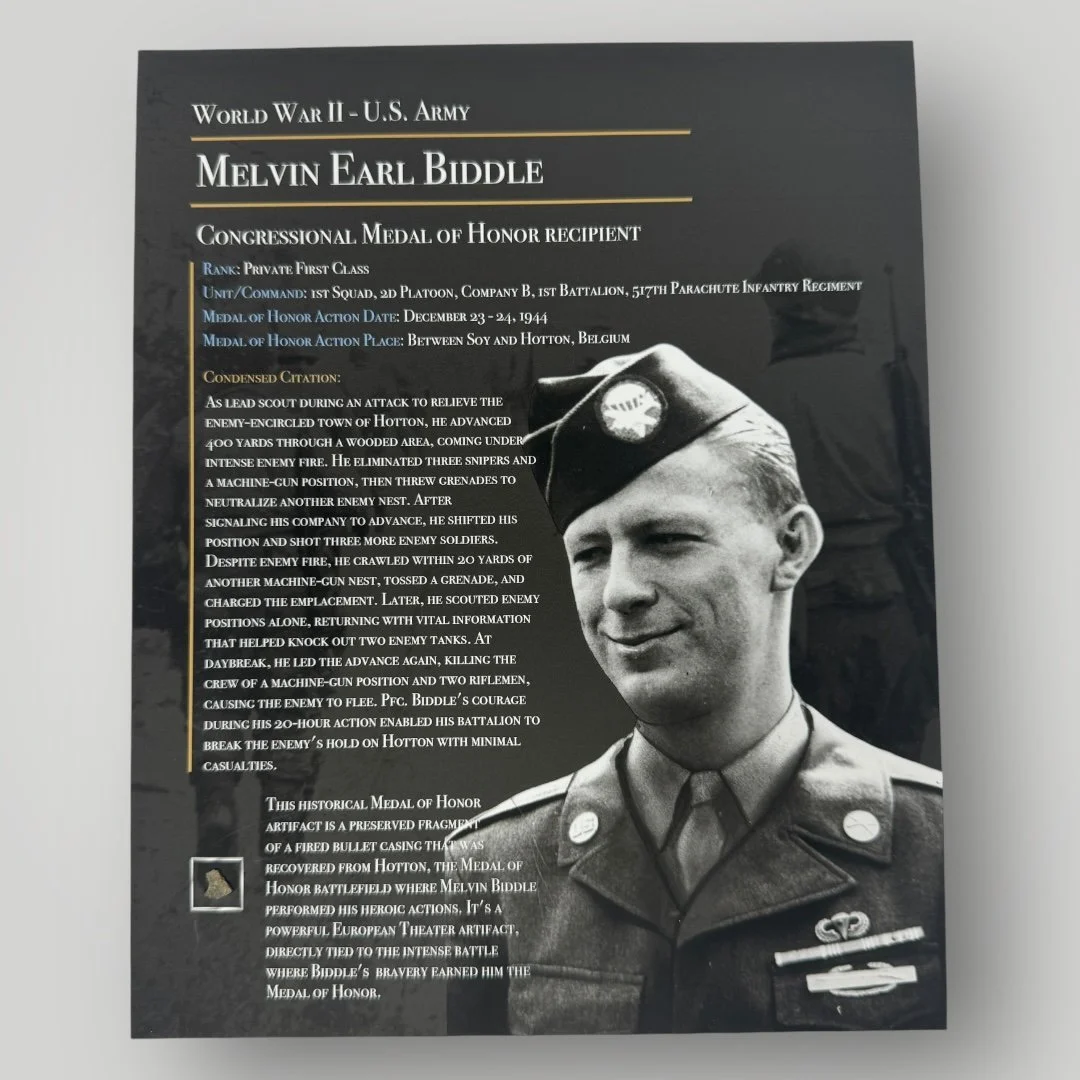
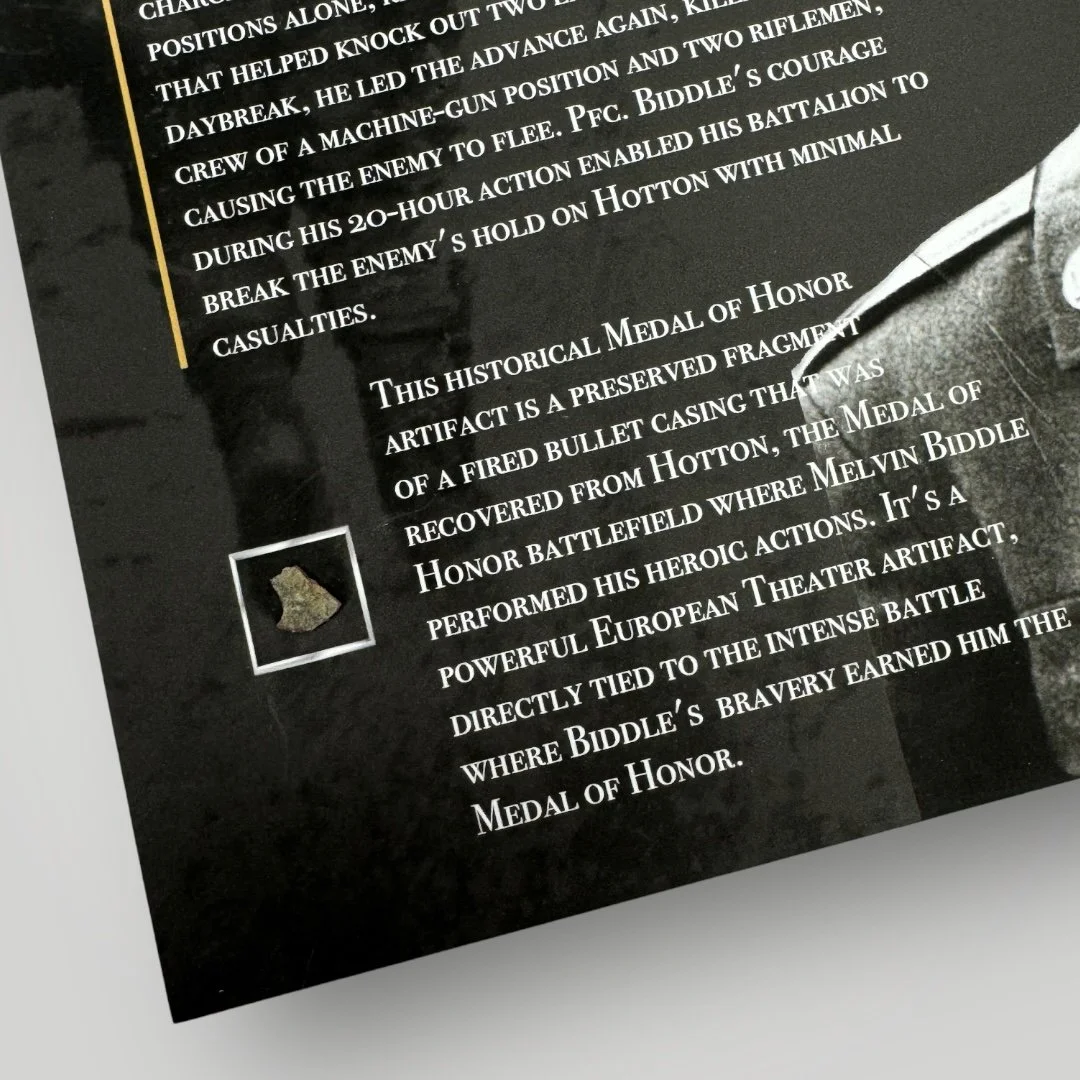
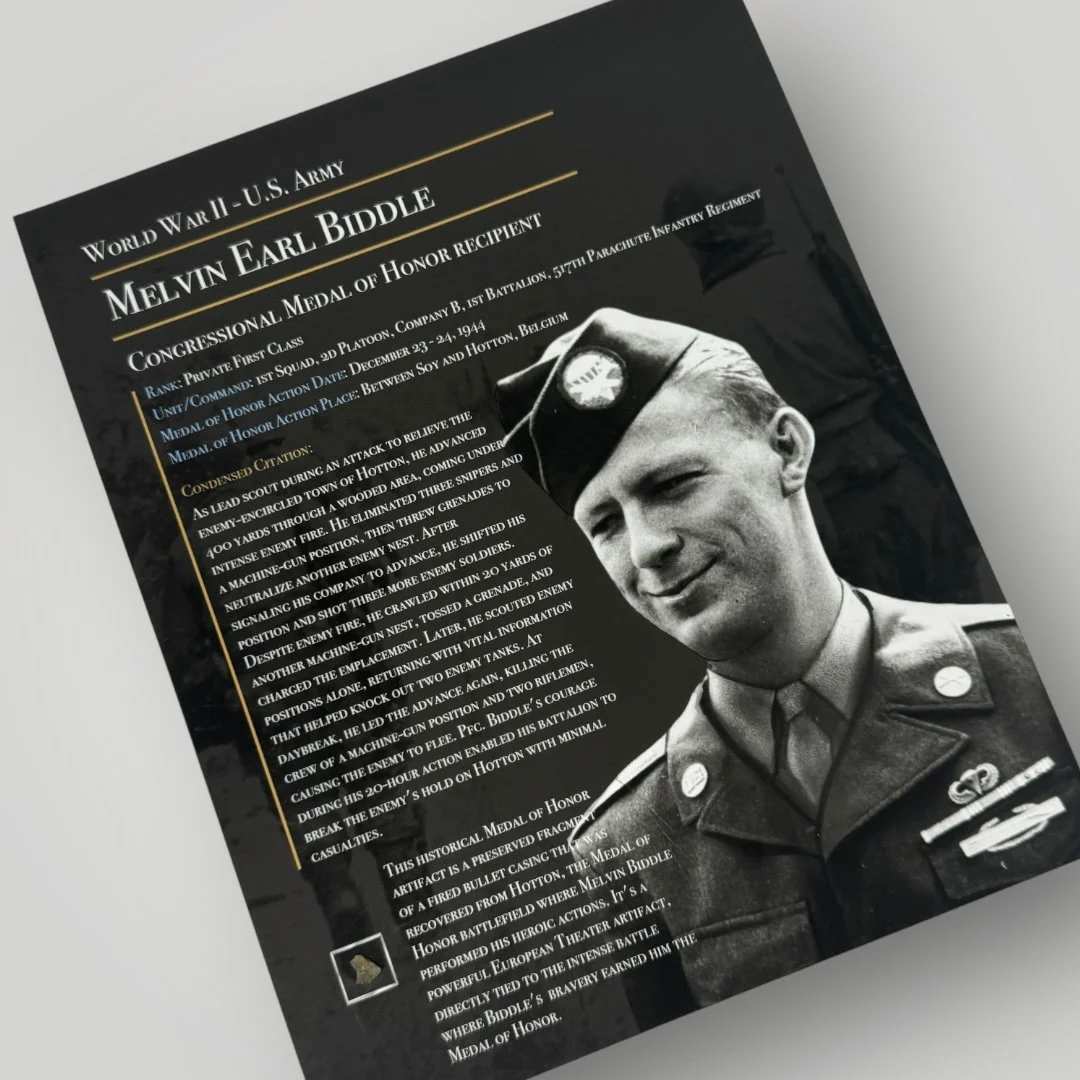

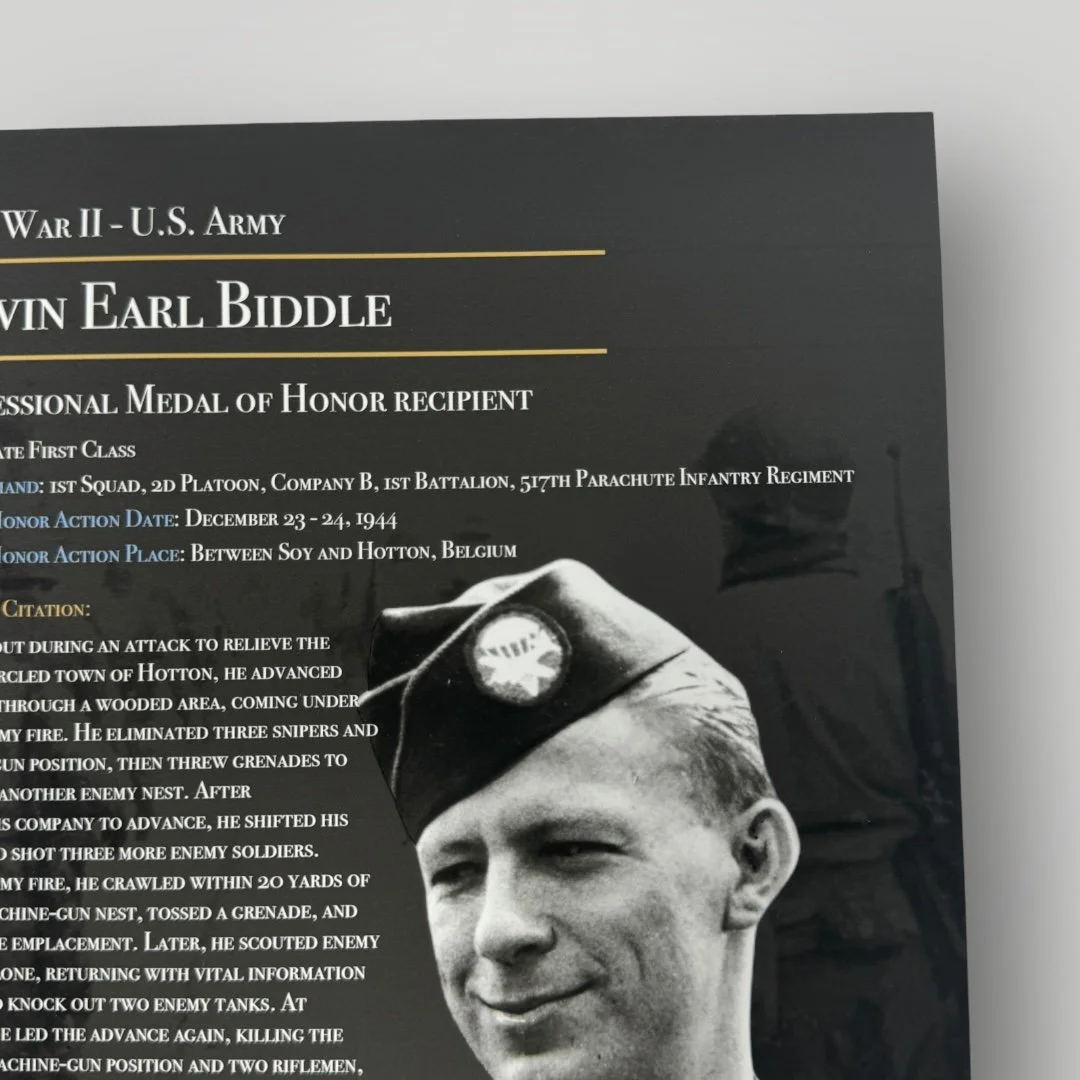
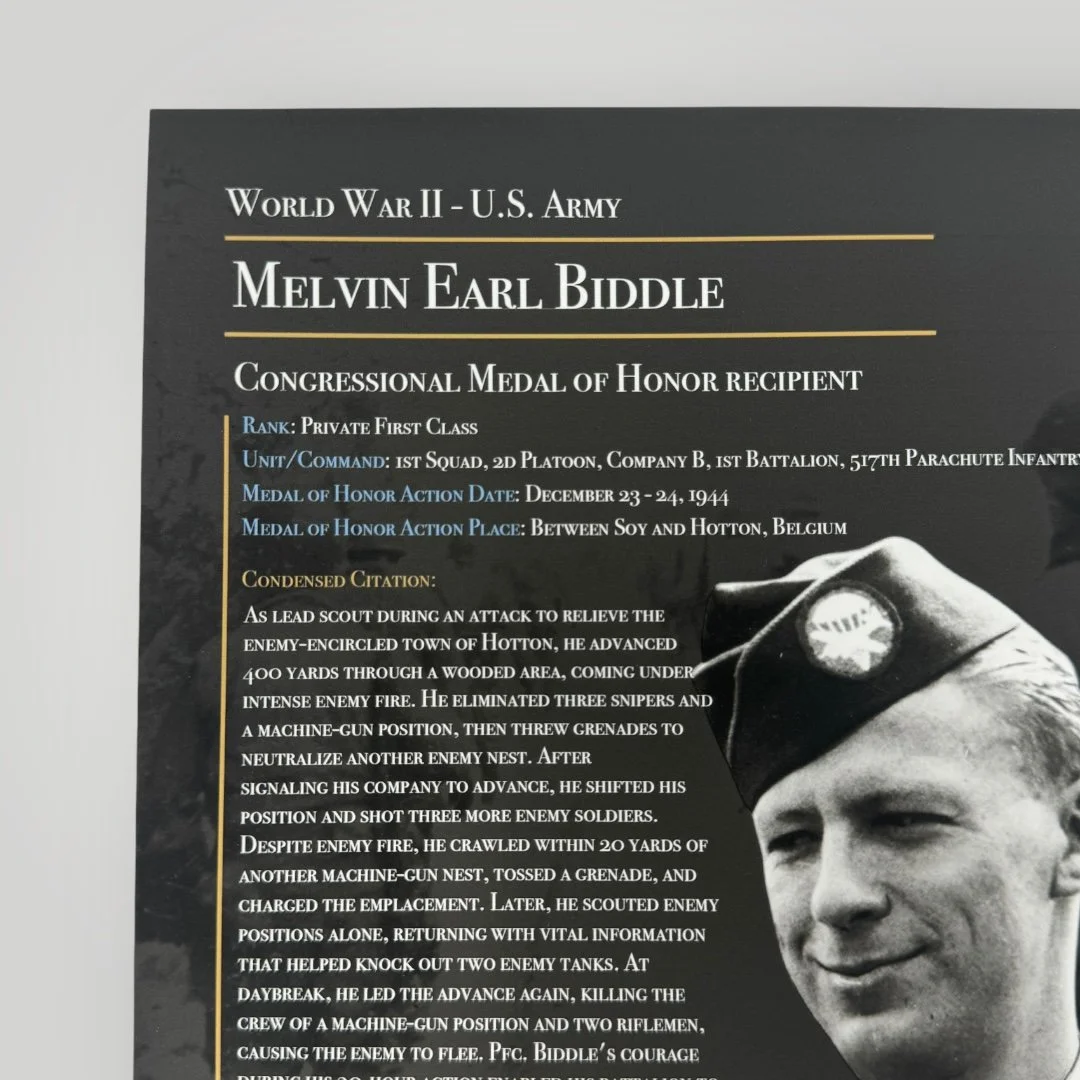
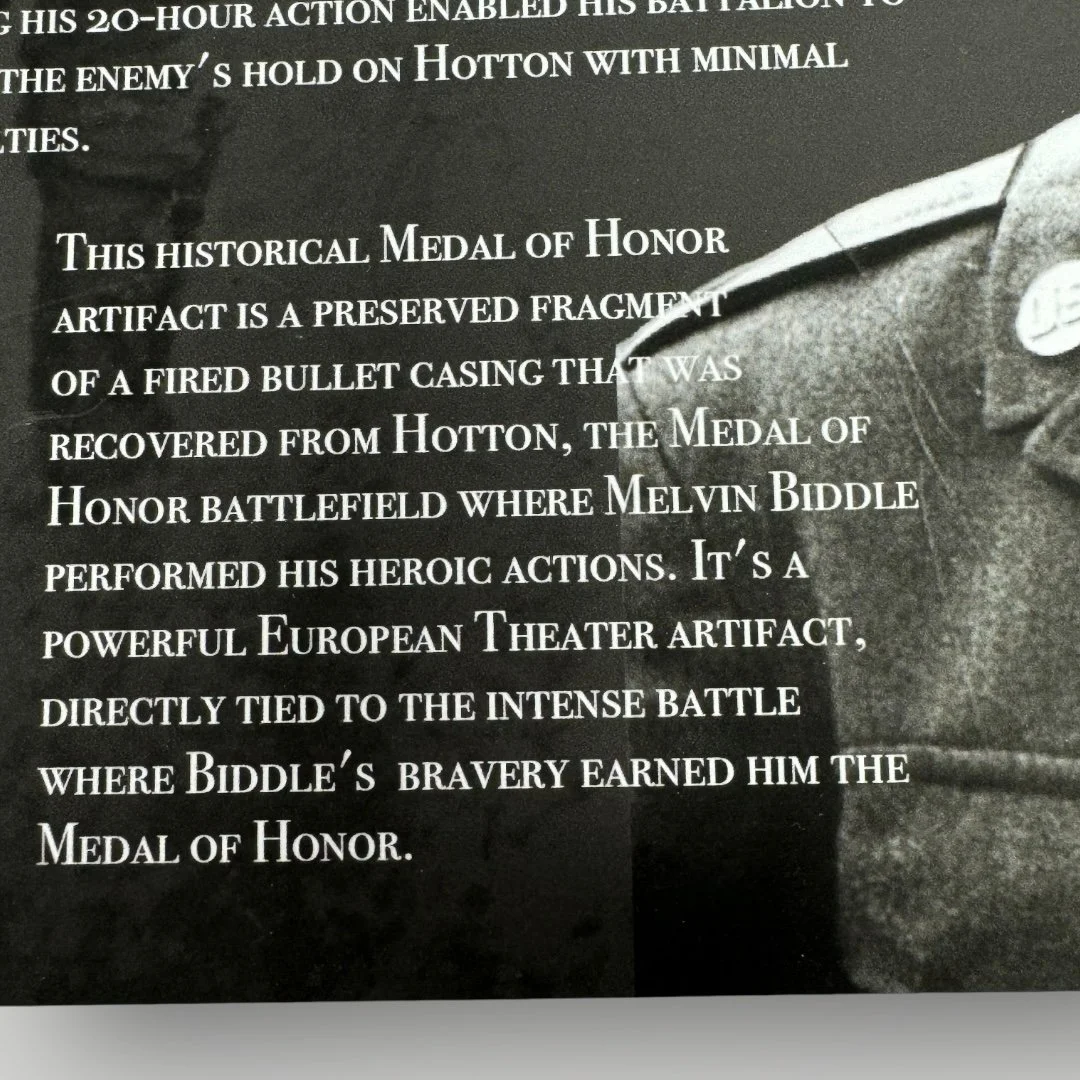
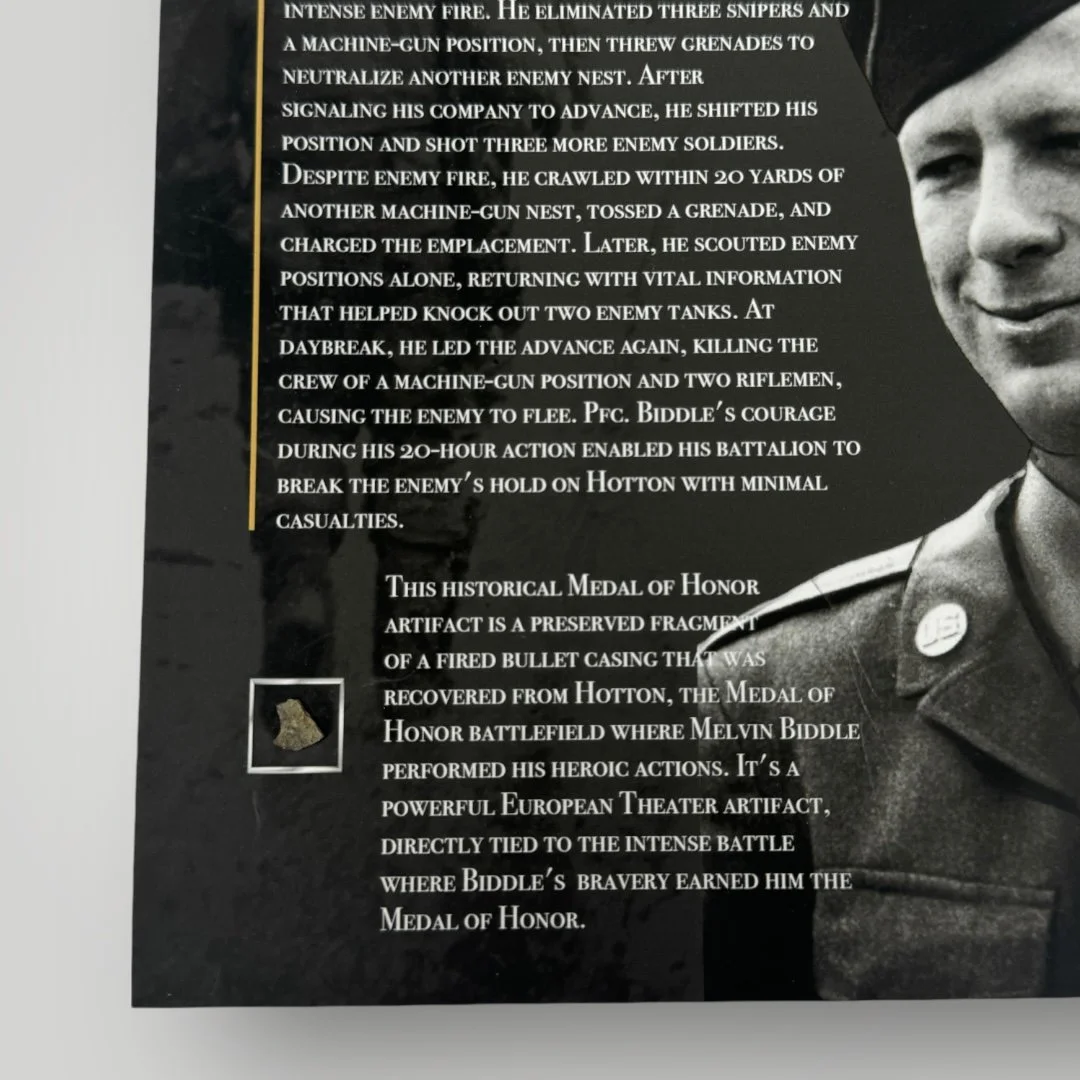
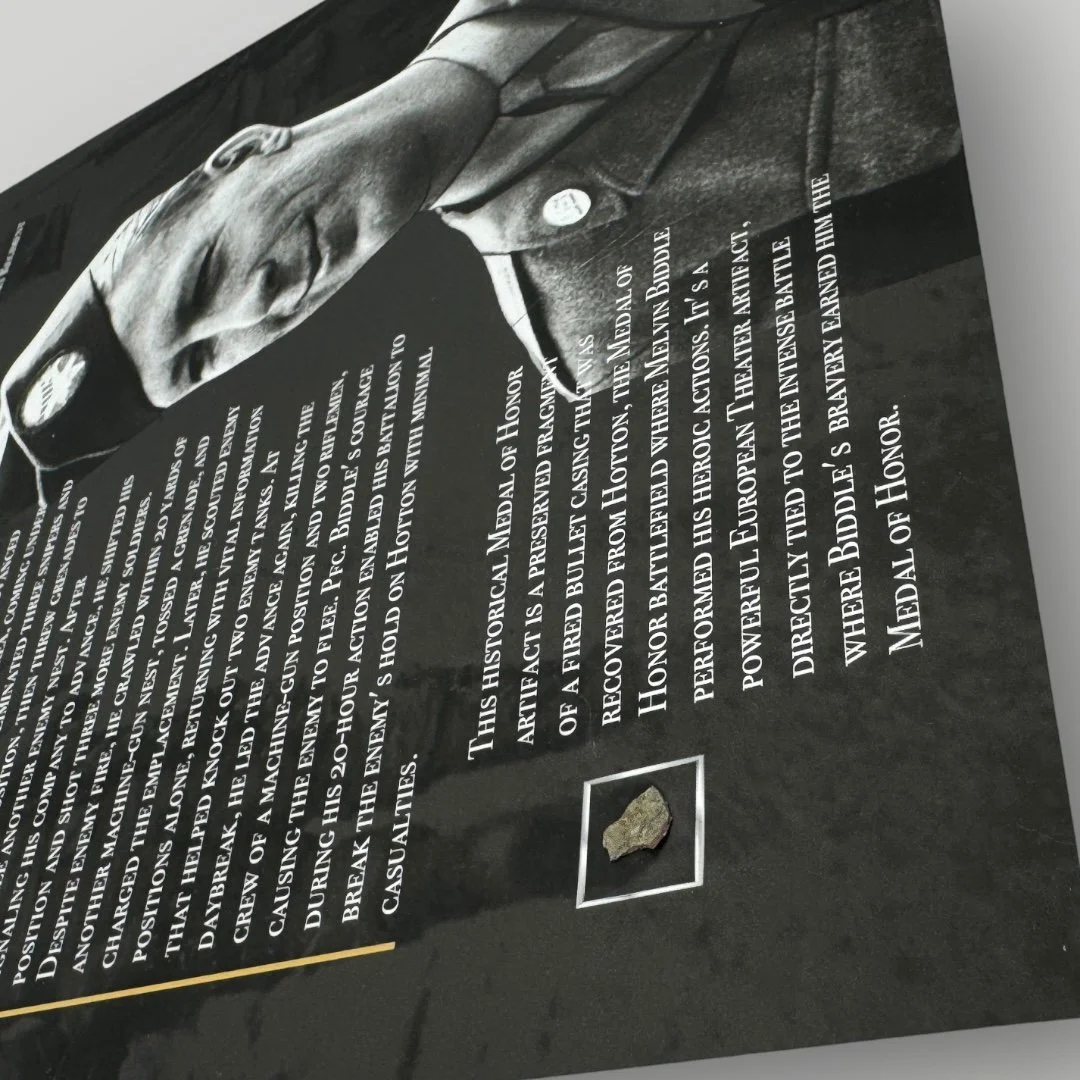
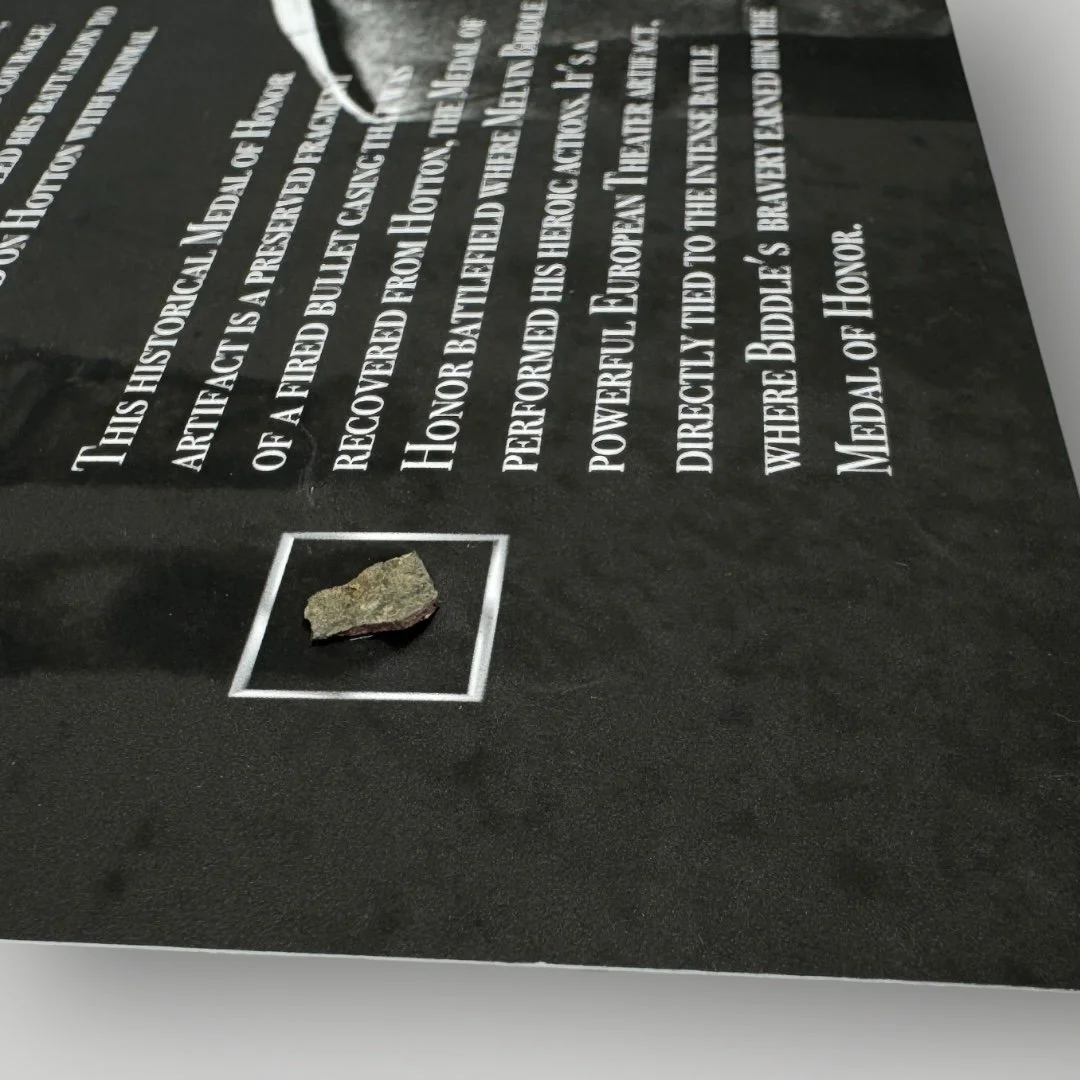
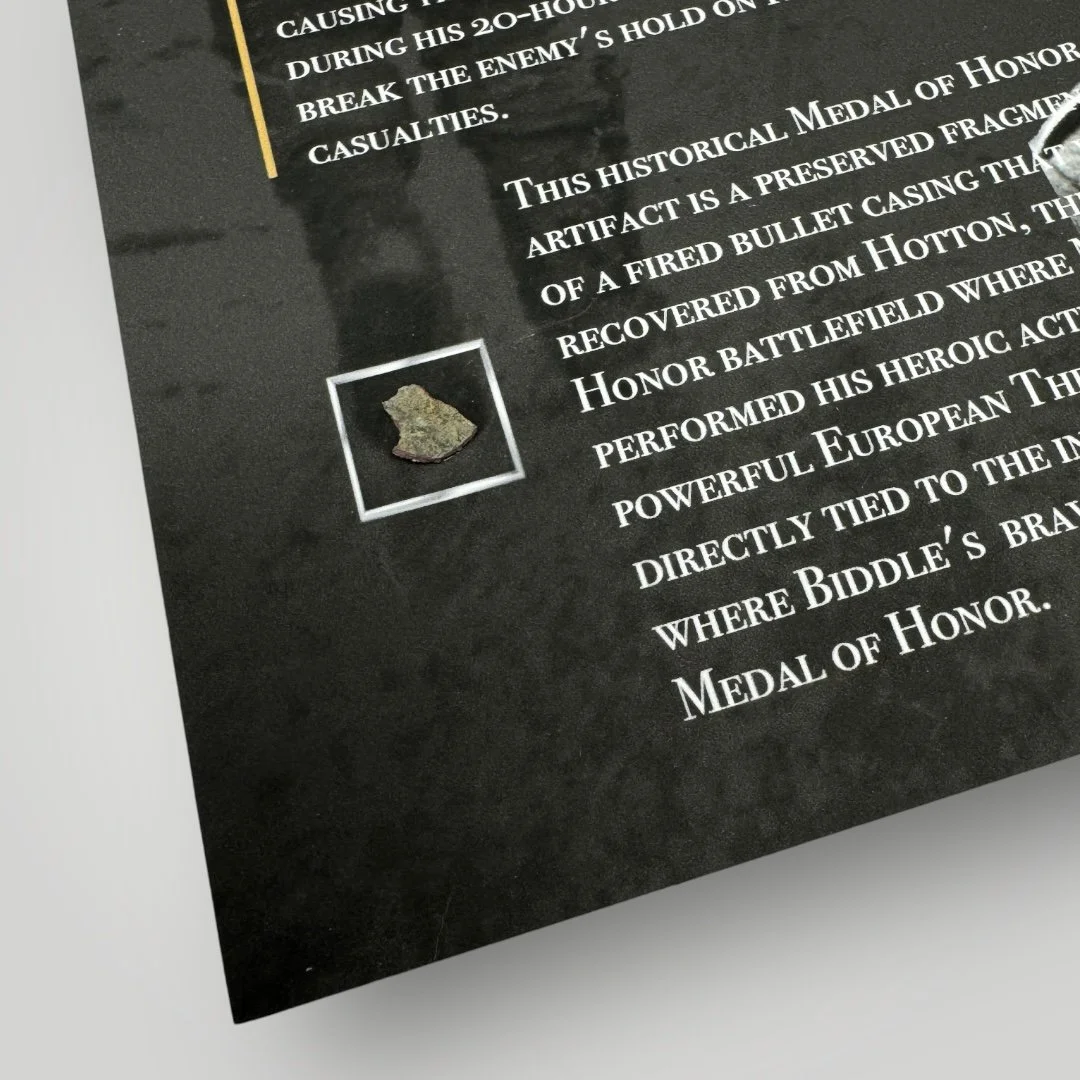
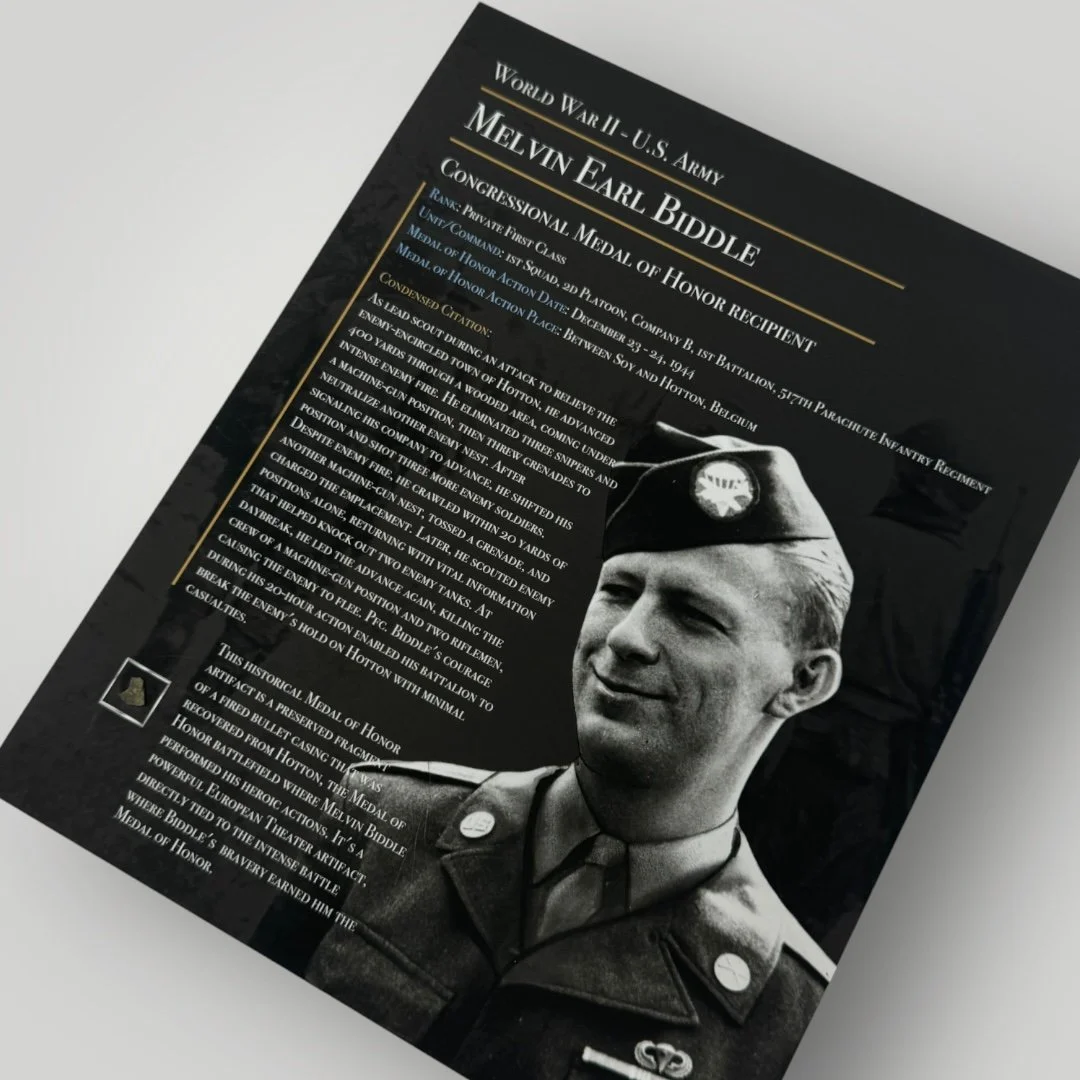
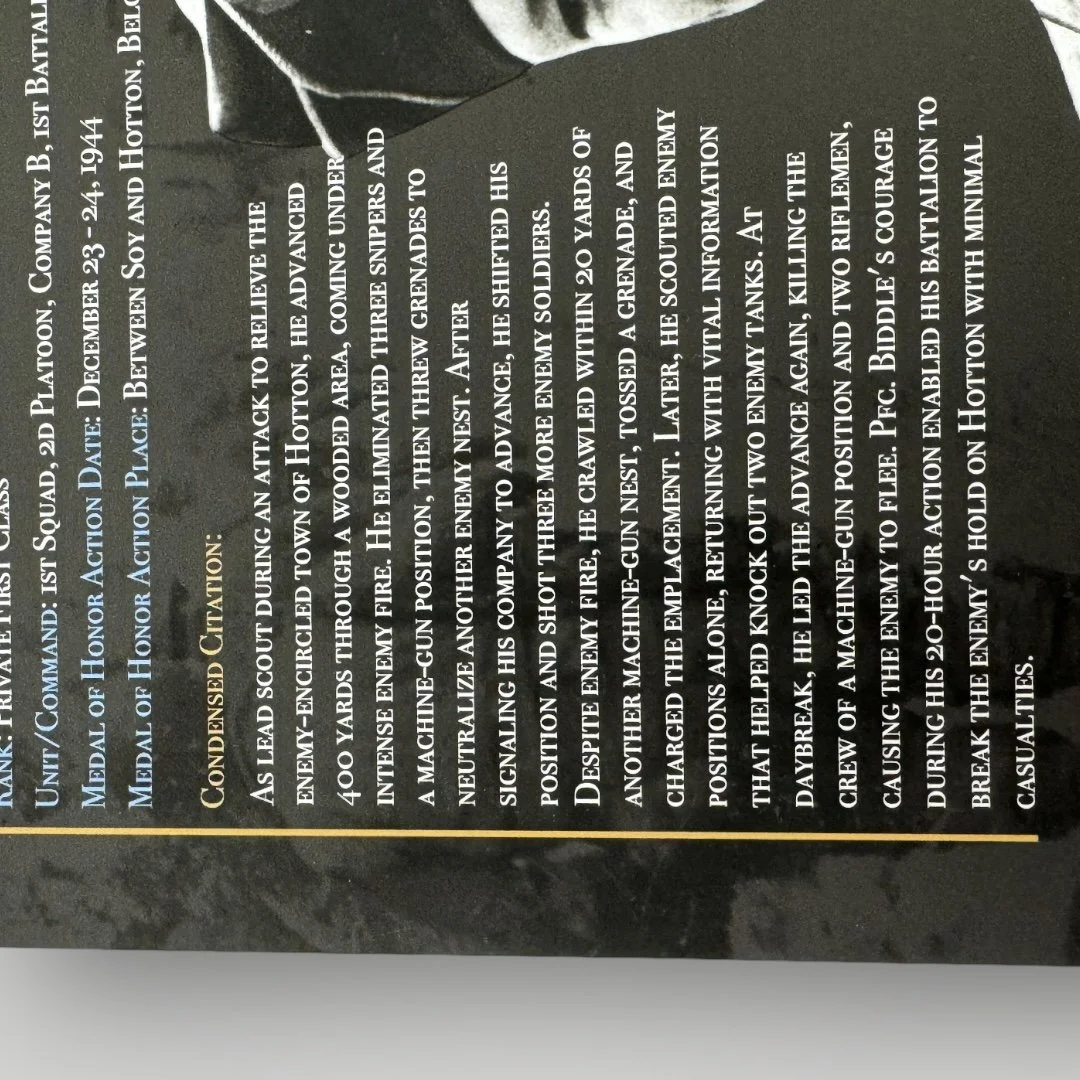
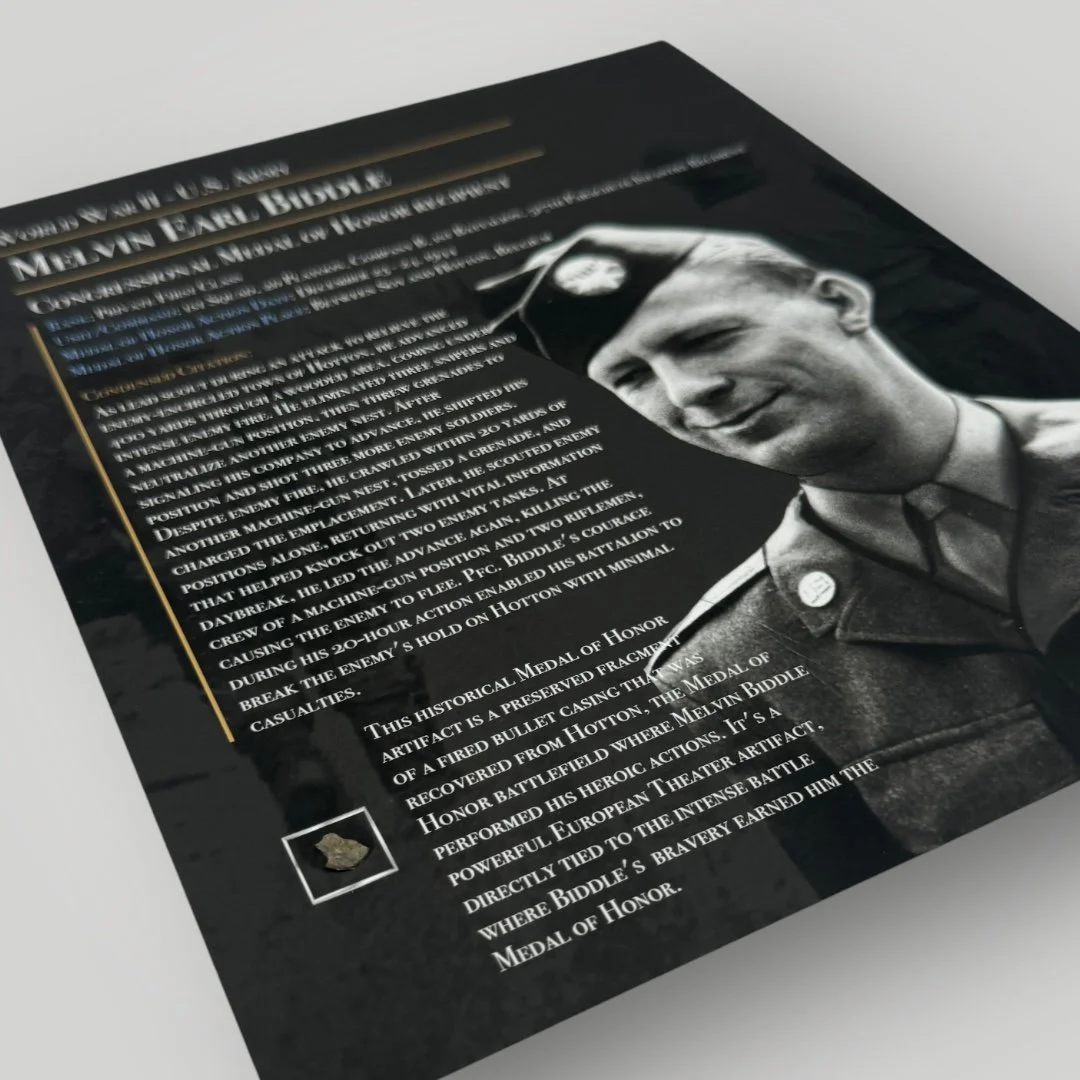

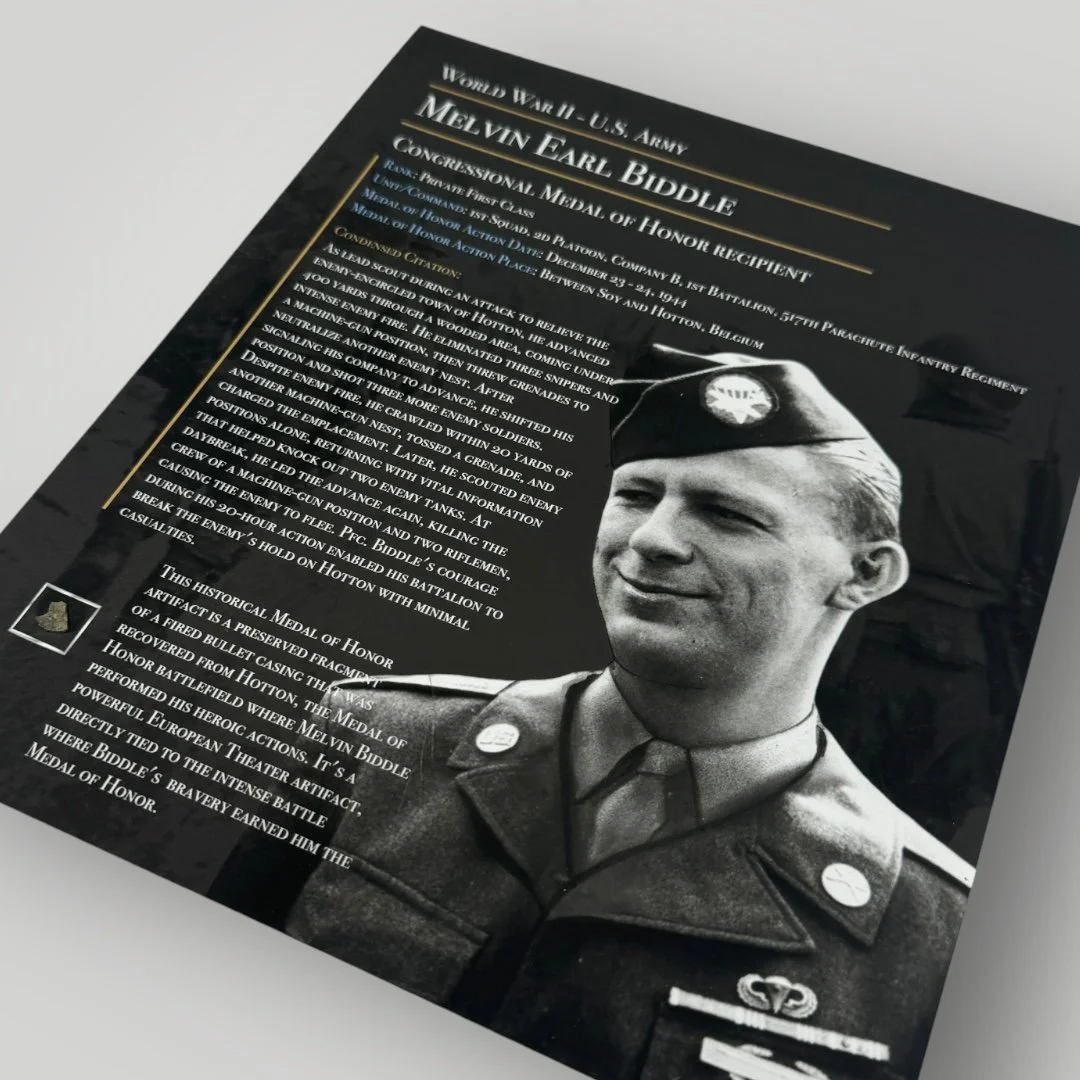
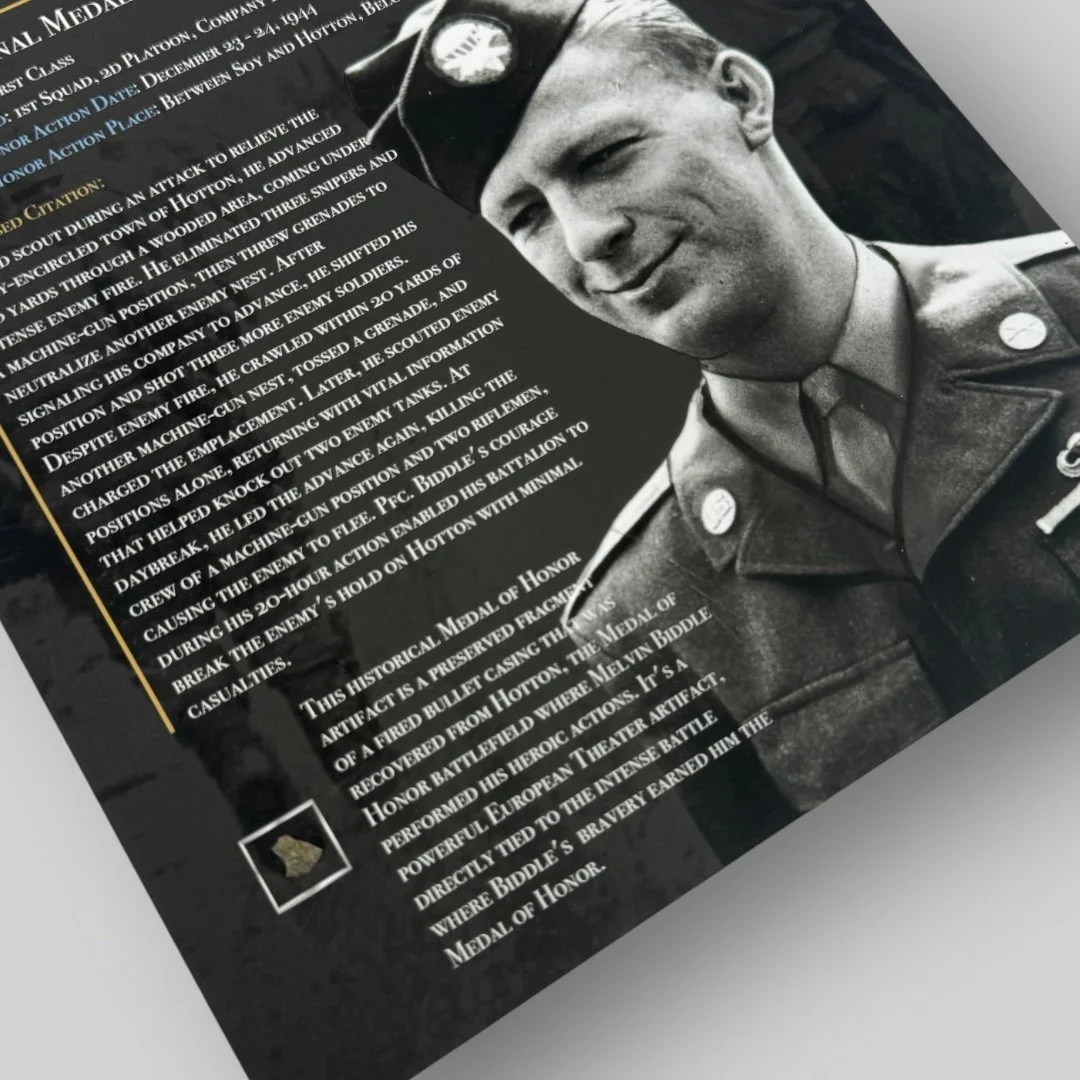
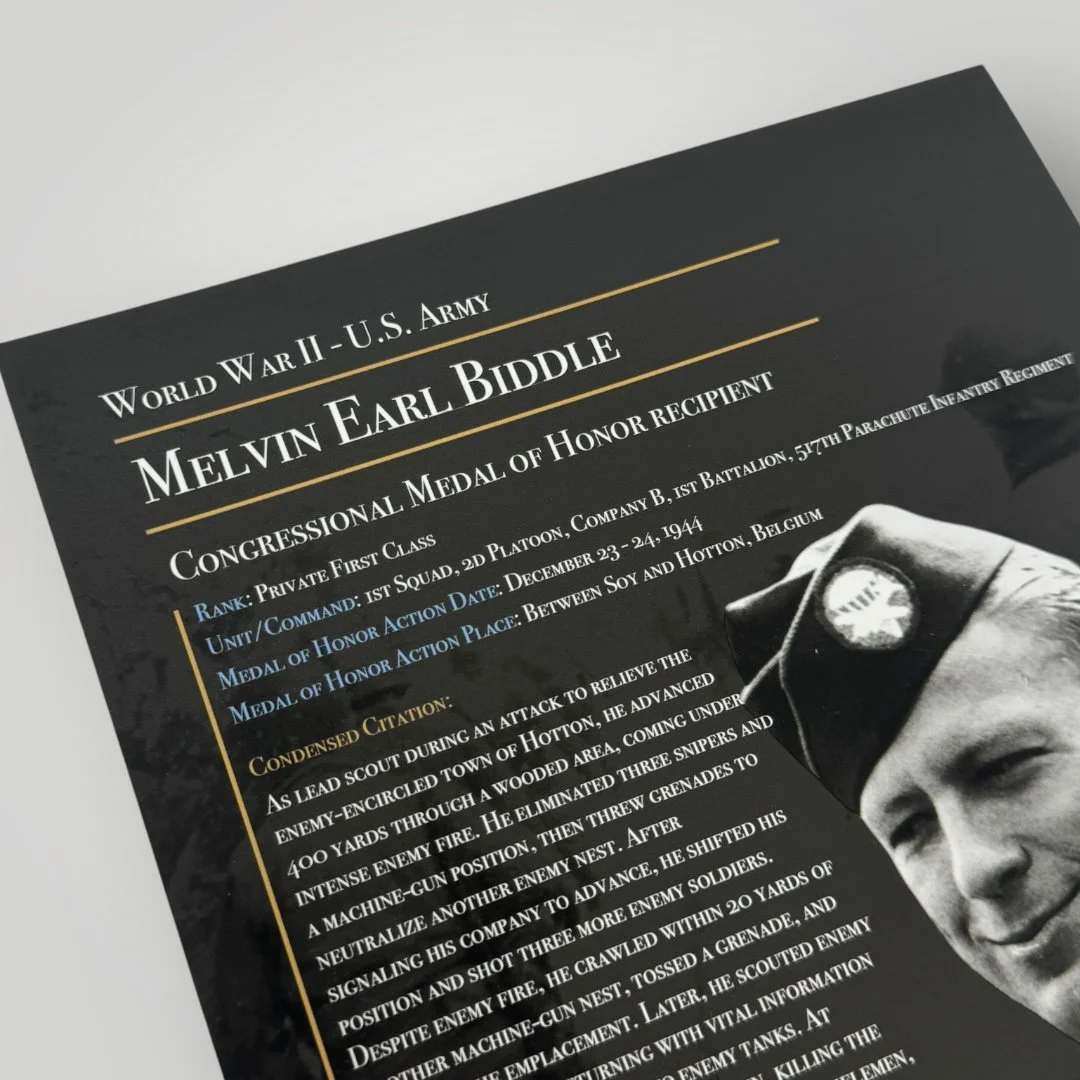

RARE! WWII December 1944 517th Parachute Infantry Regiment "Melvin Earl Biddle" Medal of Honor Hotton - Belgium Battlefield Artifact Print (Preserved Bullet Fragment)
Limited Edition WWII Medal of Honor Authentic Artifact Print
Print Size: 8 x 10 inches
Paper Type: Museum-Grade Archival Matte Fine Art Paper
Historical Artifact Included: A fragment of a WWII bullet casing, recovered from Hotton, the Battle of the Bulge Medal of Honor battlefield where Melvin Biddle performed his heroic actions
Date of Event: December 1944
Edition: Limited to 50 pieces
Each print in this exclusive Limited Edition series is a true collector's item. Part of our renowned "Piece of History Prints" collection, it features an authentic fragment of a fired bullet casing recovered from Hotton, Belgium—the very battlefield where Melvin Biddle earned his Medal of Honor during the Battle of the Bulge. These fragments, preserved from the site of Biddle's heroism, make every print truly one-of-a-kind, as each casing piece will have its own unique characteristics.
Professionally integrated into the artwork, this meticulously preserved artifact transforms the print into an extraordinary historical keepsake, perfect for framing and displaying in any WWII or military history collection. It’s not just a print, but a tangible connection to one of World War II’s most significant battles and the extraordinary courage of a Medal of Honor recipient.
Bonus Gift: Each purchase includes a FREE 8.5 x 11 hard acrylic display sleeve, ensuring your print and its historical artifact are safely protected while you select the ideal frame or display method.
The WWII Medal of Honor of Melvin Earl Biddle and the Historical Significance of a Bullet Casing Fragment from Hotton:
Melvin Earl Biddle: A Hero in WWII
Melvin Earl Biddle, a private first class in the United States Army, earned the nation's highest military decoration, the Medal of Honor, for his extraordinary bravery and selfless actions during World War II. His service during the Battle of the Bulge, one of the most pivotal battles on the Western Front, encapsulated the courage and sacrifice of countless soldiers who fought to protect their fellow servicemen and defeat the Nazi war machine.
Born on November 28, 1923, in Daleville, Indiana, Biddle entered the Army in 1943 as part of the 517th Parachute Infantry Regiment. Biddle's courageous actions occurred during the Battle of Hotton, Belgium, in December 1944. By this point, the German army was launching a final counteroffensive, intending to push back the advancing Allied forces through the Ardennes region. This engagement, known as the Battle of the Bulge, marked one of the deadliest and most decisive clashes of the war. The defense of Hotton was crucial, and it was here that Biddle’s heroism emerged.
On December 23-24, 1944, Biddle's unit found itself engaged in fierce combat with German forces as they sought to defend Hotton and its strategic roadways. Under the cover of darkness, Biddle ventured behind enemy lines, single-handedly eliminating multiple enemy machine-gun positions and neutralizing a sniper threatening his unit’s advance. His actions directly contributed to the unit’s ability to press forward, inflicting heavy casualties on the enemy and crippling their defenses. Over the course of two days, Biddle repeatedly placed himself in mortal danger to ensure the success of his comrades.
President Harry S. Truman presented Biddle with the Medal of Honor on October 30, 1945. The citation for Biddle's Medal of Honor notes his conspicuous gallantry, stating that his fearless leadership and unyielding dedication to his comrades helped to change the course of the battle. Biddle’s actions exemplified the core values of duty, bravery, and sacrifice for which the Medal of Honor stands. Truman is famously known to have said while presenting the medal: "I would rather have this Medal than be President."
The Hotton Battlefield: A Site of Historical and Emotional Significance
The battlefield of Hotton, where Biddle’s heroism unfolded, remains a site of historical reverence. Situated along the Ourthe River, Hotton served as a critical junction for German forces seeking to split the Allied lines during the Ardennes offensive. The control of Hotton and its surrounding roads was essential to the German offensive strategy, and fierce fighting broke out as both sides vied for control of the town and its bridges.
The Battle of Hotton was part of the larger struggle to protect Bastogne, a vital crossroads in Belgium. The Allies' ability to withstand the German onslaught at places like Hotton helped to turn the tide of the Battle of the Bulge. Though not as widely remembered as other engagements during the Bulge, the defense of Hotton was instrumental in preventing the Germans from capturing their strategic objectives.
The Historical Significance of the Bullet Casing Fragment
A fragment from a fired bullet casing recovered from the Hotton battlefield holds an extraordinary connection to Melvin Biddle’s Medal of Honor actions. This relic, though small, represents a tangible link to the events that shaped one of the most significant battles of World War II and to Biddle's valor in the face of overwhelming odds.
To hold such a fragment is to hold a piece of history—a testament to the chaos, violence, and human struggle of the battlefield. It serves as a reminder of the high stakes faced by soldiers like Biddle, who fought with incredible bravery to overcome the challenges of war. The fact that this fragment was fired in the vicinity where Biddle carried out his heroic actions imbues it with even greater significance.
On a broader scale, bullet casing fragments recovered from battlefields provide historians, scholars, and artifact enthusiasts with insights into the nature of the combat that took place in specific locations. They offer a physical connection to the past, allowing us to imagine the intensity of the battles and the hardships faced by the men who fought them. In the case of Hotton, this fragment symbolizes the determination of the Allied forces to halt the German offensive and defend the hard-won freedoms of Europe.
Remembering and Honoring Valor
The preservation of battlefield relics such as this bullet casing fragment plays a critical role in ensuring that the stories of World War II heroes like Melvin Biddle continue to be told. The Medal of Honor is not simply an award; it is a symbol of extraordinary courage and a reminder of the sacrifices made by soldiers who placed their lives on the line for the greater good.
Artifacts like the bullet casing fragment from Hotton carry the weight of history within them, serving as vessels of memory. For those who study the Second World War, these fragments provide an invaluable means of connecting with the past, offering insights that cannot be gleaned from books or photographs alone. They allow us to touch history and, in doing so, to remember the men and women who shaped it.
In the case of Melvin Biddle, this connection to Hotton and the battlefield where he performed his heroic actions underscores the enduring legacy of his service. As future generations study World War II, they will find inspiration in Biddle’s story—a story of an ordinary man who rose to extraordinary heights in the face of unimaginable adversity. The bullet casing fragment is not just a relic; it is a reminder that history is made up of countless individual acts of courage, each one contributing to the larger narrative of freedom and victory.
The Medal of Honor awarded to Melvin Earl Biddle serves as a profound tribute to his bravery during one of the most harrowing battles of World War II. His heroic actions in Hotton, Belgium, exemplify the courage and sacrifice of countless soldiers who fought in the Battle of the Bulge. A bullet casing fragment recovered from the Hotton battlefield ties the historical significance of Biddle’s valor to a tangible piece of the conflict.
As both a battlefield relic and a symbol of personal bravery, the fragment represents the extraordinary courage of the soldiers who fought for victory in one of the war's darkest hours. It reminds us of the personal stories behind the broader historical events and underscores the importance of remembering and preserving these stories for future generations.
In this fragment, we find not just the echoes of gunfire, but the echoes of courage, sacrifice, and the unyielding spirit of soldiers like Melvin Earl Biddle, whose actions on that December day in 1944 helped shape the course of history.